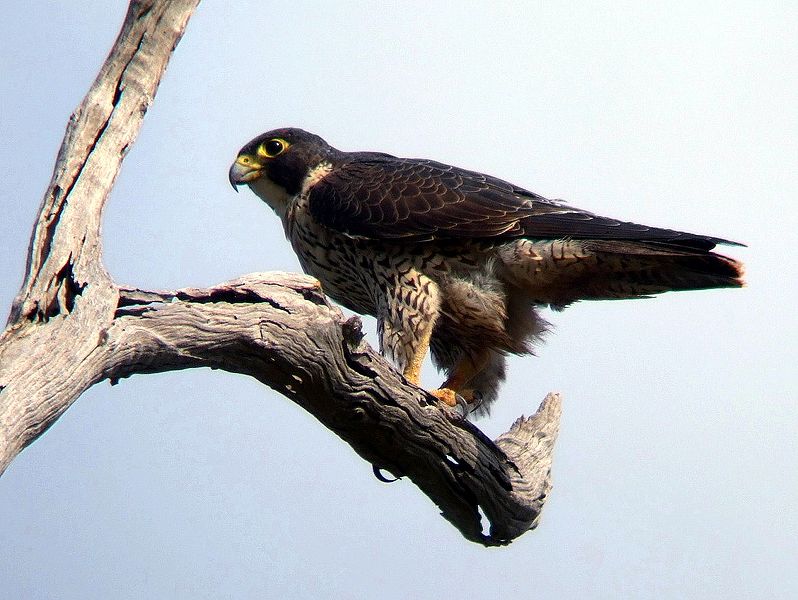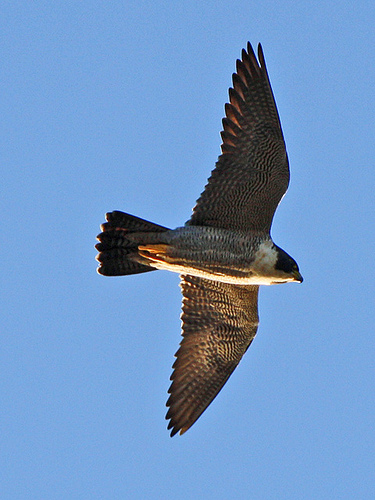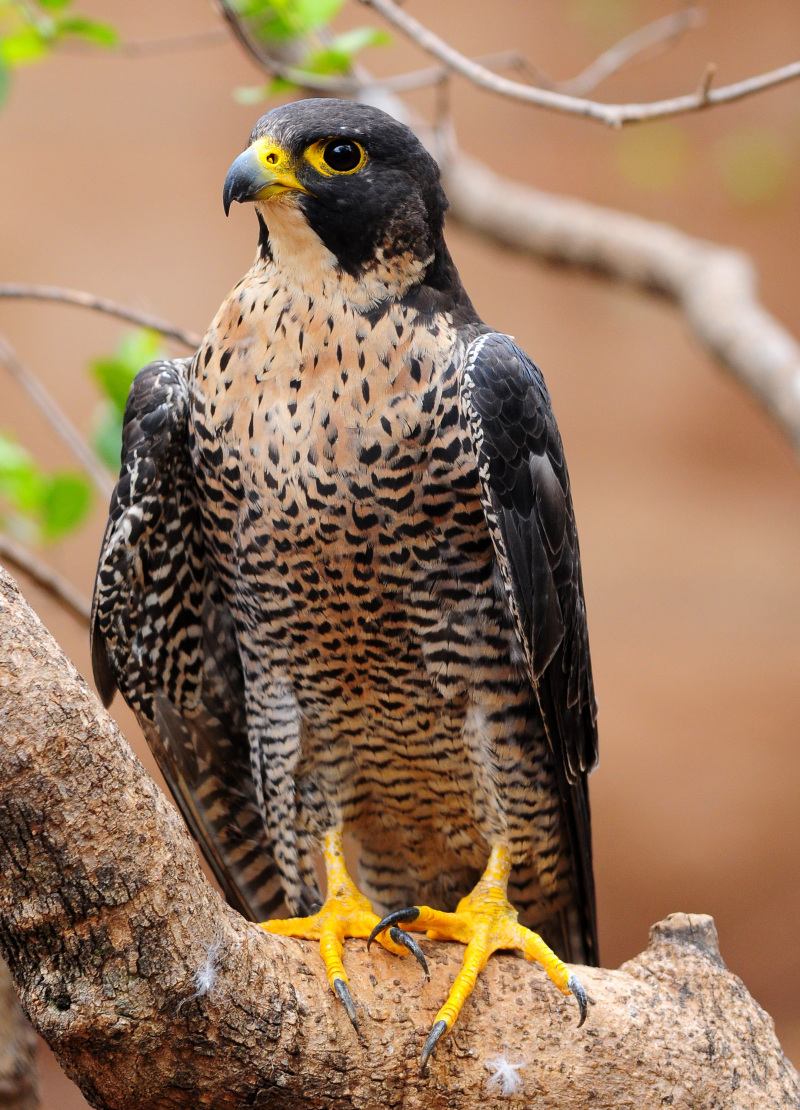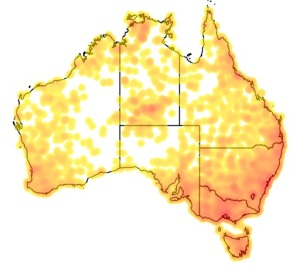Colours
Distinguishing features
The male and female have similar markings and plumage, but as in many birds of prey it displays marked reverse sexual dimorphism in size, with the female measuring up to 30% larger than the male.
The back and the long pointed wings of the adult are usually bluish black to slate grey with indistinct darker barring that varies between subspecies. The wingtips are black. The white to rusty underparts are barred with thin clean bands of dark brown or black. The tail, coloured like the back but with thin clean bars, is long, narrow, and rounded at the end with a black tip and a white band at the very end. The top of the head and a "moustache" along the cheeks are black, contrasting sharply with the pale sides of the neck and white throat.
The cere is yellow, as are the feet, and the beak and claws are black. The upper beak is notched near the tip, an adaptation which enables falcons to kill prey by severing the spinal column at the neck.
The immature bird is much browner with streaked, rather than barred, underparts, and has a pale bluish cere and orbital ring. (Wikipedia)
Size
- From 45 cm to 50 cm (Length of specimen) - applies to Females
- From 35 cm to 42 cm (Length of specimen) - applies to Males
Wingspan
- From 74 cm to 120 cm
Synonyms
Similar taxa
-
Animalia:
Australian Hobby (species: Falco (Falco) longipennis)
The Australian Hobby strongly resembles the Peregrine Falcon, however it is much smaller and has darker plumage.
Distribution
Distribution and habitat preferences
It lives mostly along mountain ranges, river valleys, coastlines, and increasingly in cities. (Wikipedia)
Diet
It hunts other birds, mainly at dawn and dusk, when prey are most active. It feeds almost exclusively on medium-sized birds such as pigeons and doves, waterfowl, songbirds, and waders.
It reaches faster speeds than any other animal on the planet when performing the stoop, which involves soaring to a great height and then diving steeply at speeds of over 320 km/h, hitting one wing of its prey so as not to harm itself on impact.
Once prey is spotted, it begins its stoop, folding back the tail and wings, with feet tucked. Prey is struck and captured in mid-air; the Peregrine Falcon strikes its prey with a clenched foot, stunning or killing it with the impact, then turns to catch it in mid-air. If its prey is too heavy to carry, it will drop the prey to the ground and eat it there. Prey is plucked before consumption. (Wikipedia)




